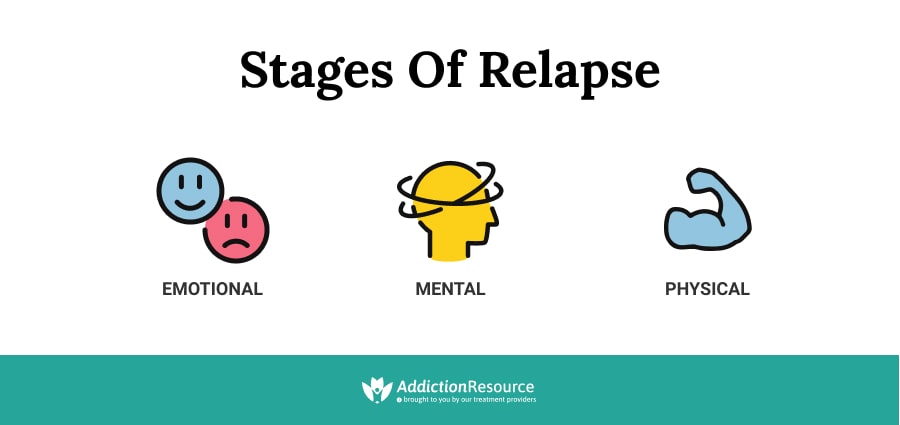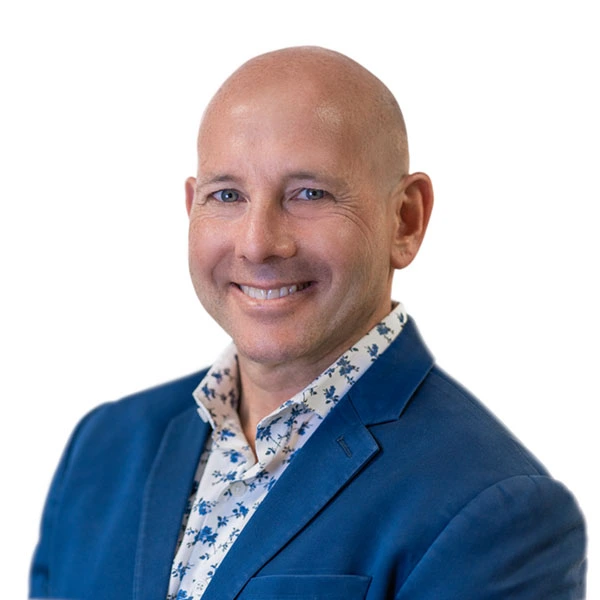Relapse remains one of the biggest challenges in addiction recovery, with countless individuals facing setbacks that not only disrupt their lives but can also lead to death.
Since relapses are often experienced by 50% of recovering patients even after 12 weeks of intensive inpatient treatment, they can be treated as an expected part of the recovery journey. This normalization can sometimes diminish the urgency to prevent them proactively.
Relapse prevention offers strategies for early recognition of triggers, education on high-risk scenarios, and behavioral techniques to combat urges and cravings. Continue reading to discover how a strong relapse prevention plan can make a vital difference in sustaining sobriety and improving quality of life.
Table Of Contents:
What Relapse Means?
In the context of substance use disorder (SUD), relapse refers to a return to previous levels of substance use after a period of abstinence or significant reduction. It’s now understood that relapse is not a single event but rather a process with three specific stages, including:
- Emotional: When a person feels emotional discomfort that sets the stage for future relapse.
- Mental: When a person struggles internally, thinking about staying sober and returning to substance use.
- Physical: When a person returns to substance use, starting with a “lapse” that may escalate into uncontrolled use or full relapse.
This breakdown allows healthcare providers to detect early warning signs and implement targeted interventions to prevent the progression toward full relapse.

The cycle of relapse and recovery is common in chronic conditions like SUD, and relapse itself is not an indicator of failure but rather a signal that an individual may need additional support. With proactive relapse prevention strategies that we will uncover below, individuals can strengthen their recovery journey and reduce the risk of returning to substance use.
What Is The Relapse Prevention Model?
Over time, addiction specialists and healthcare providers have designed more effective approaches for addiction recovery.
The Relapse Prevention (RP) Model is a therapeutic approach designed to help individuals identify, anticipate, and manage the factors that lead to relapse. Initially developed by psychologists Alan Marlatt and Judith Gordon, this model views relapse as a process, not just an event, and focuses on building skills to prevent substance use before it occurs.
The RP model is based on the idea that relapse can be caused by several factors, including:
- High-risk situations: These can be internal experiences, like negative thoughts, or external cues, like people associated with substance use.
- Covert antecedents: These include lifestyle factors, urges, and cravings.
The RP model offers various intervention strategies to help people address the relapse process. These strategies can be delivered in multiple ways, including: Individual or group sessions, face-to-face or online therapy, and blended therapy (online with support).
What Is A Relapse Prevention Plan?
Within the (RP) model, patients can find their relapse prevention plan, which is a personalized, structured approach designed to help individuals in recovery from substance use or other addictive behaviors maintain their progress by identifying and managing triggers, developing coping strategies, and preparing for high-risk situations.
The plan typically includes:
- Identification of High-Risk Situations: Recognizing specific environments, emotional states, or social settings that increase the risk of relapse.
- Coping Strategies: Learning and practicing skills to manage urges, cravings, and stress in healthier ways.
- Support System: Establishing a network of friends, family, or support groups that offer assistance and accountability.
- Action Steps for Cravings and Lapses: A set of immediate steps to follow when cravings/lapses occur to prevent a full relapse.
- Lifestyle Changes: Implementing daily routines and self-care practices that support long-term recovery and well-being.
The goal of a relapse prevention plan is to empower individuals to maintain abstinence by building resilience against relapse triggers and strengthening their commitment to recovery.
How To Write A Relapse Prevention Plan?
Creating a relapse prevention plan is a crucial step in maintaining long-term recovery from substance use disorders and addictive behaviors.
However, this process should not be undertaken in isolation. Collaborating with healthcare providers, support groups, and other recovery resources is essential to developing a comprehensive and effective plan. Since you are an active participant in creating your own plan, here’s a guide to help you create one:
Identify Personal Triggers
Write down specific places, people, or situations that might lead to relapse. Common triggers include stress, social events, or environments where substances were used in the past. Consider emotions like loneliness, boredom, or anger that could increase relapse risk.
Set Clear Goals
List your long-term recovery goals and what you want to achieve by staying sober (i.e., career ambitions, finding a better job, family relationships, health). Include smaller, achievable goals that support recovery, such as attending weekly support meetings or practicing self-care.
Develop Coping Strategies
Identify specific actions that help manage cravings, such as deep breathing, exercise, or journaling. Practice techniques like positive self-talk or reframing thoughts.
For example, remind yourself of past negative consequences of using substances to counter cravings. Consider holistic therapies like meditation, mindfulness exercises, or progressive muscle relaxation to handle stress.
Build a Support Network
Remember to include the names of the supportive people and contact information, such as family, friends, or a sponsor. Schedule weekly or bi-weekly calls or meetings with supportive people to stay accountable and gain encouragement.
Create an Action Plan for High-Risk Situations
Write down specific responses you will use in high-risk situations (i.e., having an exit strategy at social gatherings, bringing your own alcoholic drinks alternatives). Have a go-to plan if you feel on the verge of relapse, such as leaving the environment, calling a friend, or using a grounding technique.
Plan for Possible Lapses
Acknowledge that a lapse (a single instance of substance use) can happen without it turning into a full relapse. Write down what to do if a lapse occurs, like contacting a counselor, attending a support group, or reviewing personal goals to refocus on recovery.
Incorporate Daily Self-Care and Healthy Habits
List activities that support physical health, such as exercising regularly, eating a balanced diet, and getting enough sleep. Include practices like journaling, setting daily intentions, or finding creative outlets to reduce stress and stay grounded.
Regularly Review and Adjust Your Plan
Relapse prevention plans should be dynamic. Schedule regular times (i.e., monthly) to review and make any needed adjustments based on your progress or new triggers that may arise. This written plan becomes a reference tool for staying on track and can be especially helpful during challenging times.
Relapse Prevention Plan Example
A relapse prevention planning worksheet can be helpful for those who find it difficult to write it themselves. It gives you a basic outline of what a good prevention process looks like and allows you to personalize it further to fit your unique needs and aid you during the recovery process.
Find an example of a relapse prevention plan below:
| Component | Details |
|---|---|
| Personal Triggers |
|
| Recovery Goals |
|
| Coping Strategies |
|
| Support Network |
|
| High-Risk Situations |
|
| Emergency Steps |
|
| Plan for Possible Lapses |
|
| Self-Care Practices |
|
| Review Schedule |
|
To get your relapse prevention template, click on the image:

Relapse Prevention Involves More Than Just Staying Sober
The significance of a robust relapse prevention plan cannot be emphasized enough. While preventing relapse may seem like a secondary objective, it is a vital resource throughout the recovery journey.
Having a well-thought-out plan is essential in moments of solitude. Even if your sobriety isn’t directly threatened, these strategies enhance your recovery experiences, inspiring your daily lives with depth, purpose, and emotional stability.
If you or someone you care about is facing challenges in maintaining sobriety, please reach out to a local rehabilitation center. You don’t have to navigate this journey alone. Substance use disorders are prevalent and treatable, and seeking assistance for addiction is a courageous step toward healing.
People Also Ask
What is an example of a relapse prevention goal?
An example of a relapse prevention goal is to maintain sobriety for six months by attending weekly support group meetings, practicing coping strategies, and engaging in regular self-care activities to enhance overall well-being.
What is a relapse prevention plan template?
A relapse prevention plan template outlines vital components, including personal triggers, recovery goals, coping strategies, support networks, high-risk situations, emergency steps, self-care practices, and a review schedule to monitor progress and adjust the plan as needed.
What is relapse prevention plan aims?
The aim of a relapse prevention plan is to identify triggers, develop coping strategies, establish support systems, and create a structured response to high-risk situations, ultimately enhancing an individual’s ability to maintain long-term sobriety.
Hope Without Commitment
Find the best treatment options. Call our free and confidential helpline
Most private insurances accepted
Page Sources
- Guenzel, N., & McChargue, D. (2023, July 21). Addiction relapse prevention. StatPearls - NCBI Bookshelf. https://www.ncbi.nlm.nih.gov/books/NBK551500/
- Moe, F. D., Moltu, C., McKay, J. R., Nesvåg, S., & Bjornestad, J. (2022). Is the relapse concept in studies of substance use disorders a ‘one size fits all’ concept? A systematic review of relapse operationalisations. Drug and Alcohol Review, 41(4), 743-758. https://doi.org/10.1111/dar.13401

 Authored by
Authored by  Reviewed by
Reviewed by 
